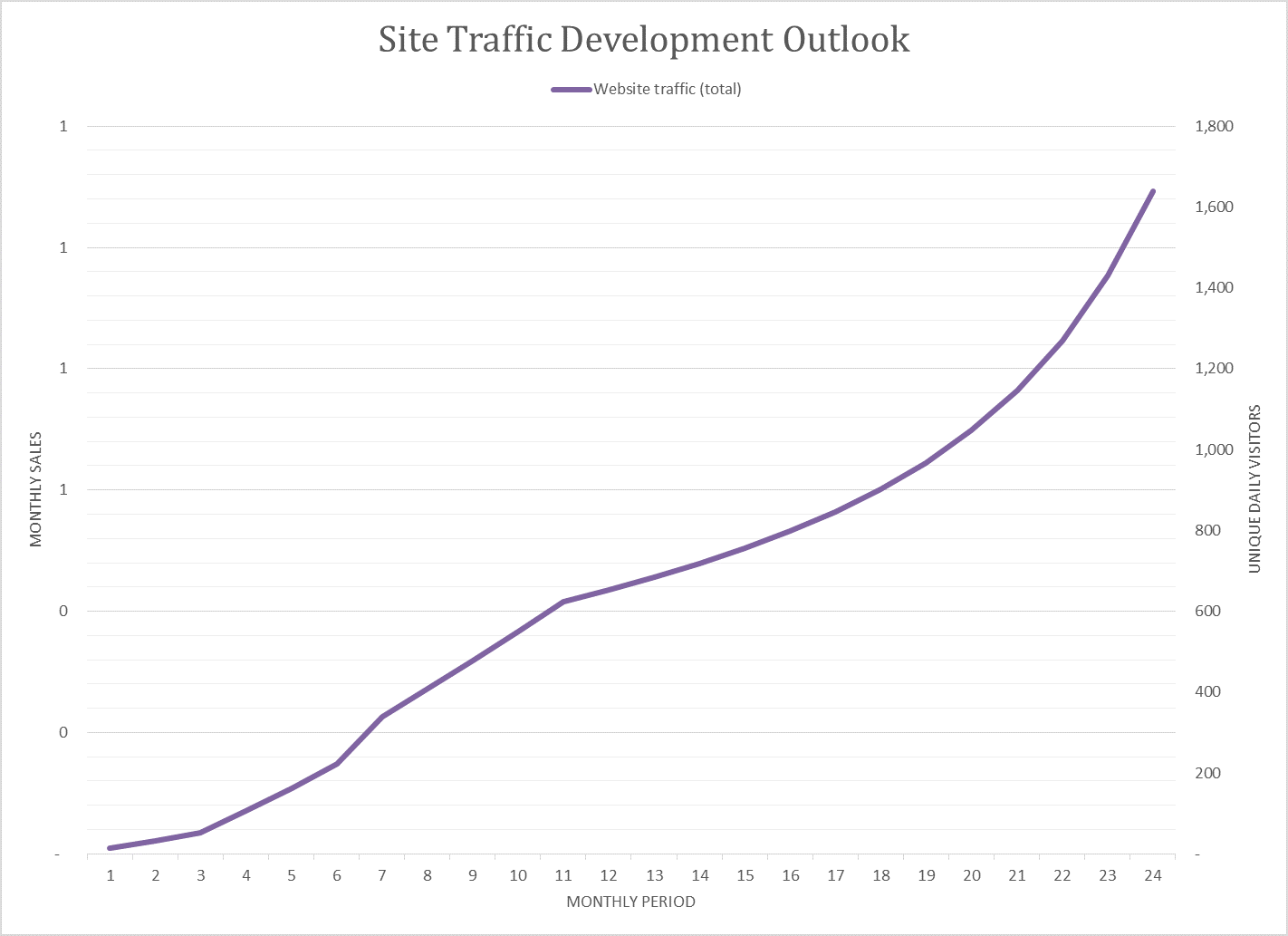INTRODUCTION
Web traffic - the holy grail of modern business and essential for office products resellers and e-commerce strategies. However, developing sustainable, relevant traffic is hard work, likely to take a long time, and involves both science and art. Figure it out, build enterprise value, sit back, do nothing, and watch the competition eat your lunch!
Ten years ago, early adopters with deep pockets funded their traffic development with expensive paid-search strategies and then used their savvy to convert first-time "paid" visitors to repeat customers through email marketing, special offers, and other loyalty programs, thereby avoiding payments to search engines, such as Google, for subsequent visits.
As a result, they gradually reduced the percentage of paid visits as a portion of total visits to their sites. As these events played out and the Google search algorithms continued to evolve, it became clear that high-quality content would become a much more critical factor to be rewarded with higher placements in search results.
DOMAIN AUTHORITY AND SEARCH
Companies with older "birth" dates for their web properties, high-quality content, large numbers of external links, and favorable KPIs on key web statistics such as traffic volume, time spent on page and bounce rates, etc., were rewarded with higher rankings in terms of domain authority and "trust" as measured by SeoMoz. The higher the domain authority, the higher a site places in popular keyword searches. For example, on a scale of 100, the domain source for DepotMax is around 85; for a; small regional office products dealer, it's 12.
T,o explain the significance of this, I'm going to use the keyword "toner" as an example where the Google Analytic Tools show:
- There are around 20,000 "toner" searches per month
- The "competition" for the keyword is high
- The cost is around $5.00 each
The problem for a small business trying to develop traffic with a paid search campaign around a high-competition keyword such as "toner" is that they will never appear high in search results because their poor domain authority compared to larger companies ranks them much lower in the results.
There are as many as 150,000 searches per month for high-competition keywords closely related to "toner." However, for the above reasons, none of these will work for a small business with weak domain authority attempting to launch a Google Keyword strategy.
LONG-TAIL KEYWORDS
While there may still be a place for paid search as a component of a traffic development strategy, for a small business to attempt to replicate the designs of early adopters would most likely fail. Instead, small enterprises should consider "long-tail" keyword searches. For example, using a string of keywords such as "Nashville Office Supplies," there are only ten monthly searches and 400 related searches due to including the word "Nashville." Having these long-tail keywords in blogs and websites and then conducting a paid keyword campaign is likely to result in high placings, albeit on a vastly reduced number of searches.
Given the limitations and expense of a keyword-paid search strategy, it's necessary to complement any paid search strategy with an initiative for developing qualified organic traffic. The following approach or a variation thereof will be required to do so.
THE "ART" COMPONENT
Content - the search engines reward high-quality, unique content.
However, to be rewarded for content, not only does it need to be unique, it needs to be helpful. Creating high-quality content without an audience is a waste of time. So, if a business operates in a large market, it has to figure out the critical issues in the industry. Whether it can help solve some of those problems with the information, it can prepare and publish on its website and other relevant online platforms. Let's assume a small business takes the time to create content that addresses critical issues in the vertical it operates in and also takes the time to have its website optimized for the keywords and designed with an appealing "look and feel" that immediately puts its business in a favorable light for visitors.
THE "SCIENCE" COMPONENT
Publication of content and fighting for attention - it's necessary to determine the social media strategy.
LinkedIn, Twitter, Facebook, and a company blog will be examples of this post. There are, of course, others, and some may be appropriate for certain businesses, but outlining a strategy for the four selected here should be sufficient for explaining how social media must be a vital part of a traffic development strategy. The primary goal for a small business should be to demonstrate its authority and expertise in its market and for its products, expand its audience for these areas of knowledge, and promote its trustworthiness as a supplier. We have already talked about content, and for it to be helpful, it has to demonstrate expertise and provide solutions for problems within the market the business operates.
Once content has been created, it should be clear that the next step is to deliver it to as broad an audience as possible and social media is the platform to accomplish that goal. But, as with everything else, it takes commitment, consistency, and hard work to build and develop high-quality networks.

The chart above displays a model showing steady growth in the three networks over two years by adding 25 monthly LinkedIn connections, 15 Facebook Friends, and 250 Twitter followers. Assuming a starting point of zero on Twitter and Facebook and 100 on LinkedIn, the network can be grown to nearly 7,000 within two years. The higher the quality and relevance of the connections to the market of the network builder, then the greater the value of the network and the more likely it will be interested in the content being distributed. Never be tempted to shortcut the network-building process – don't be tempted to purchase Twitter followers or Facebook likes – there's little chance these will be interested in anything you have to say.
PUBLICATION
Next, it's necessary to work to a consistent schedule for publishing new content, which, by now, should go without saying, needs to be high quality, exciting and relevant. It's OK to curate third-party content and to redistribute material that is interesting and relevant to the audience. Still, there's no denying that original content is also required. This should be prepared and published via a suitable blogging platform, and the more extensive the publisher's network, the more significant the audience for the material.
Techniques for converting readers into leads via visits to the website need to be learned and deployed as this becomes the foundation for developing qualified inbound organic site traffic.
DIRECT EMAIL MARKETING
In addition to blogging and publishing material to social media platforms, each business operator should commence a direct email campaign through a weekly or twice-weekly newsletter. The newsletter must also be designed to attract traffic to the website with various "calls-to-action" in each blast.
More detail for best practices on each of the social media platforms will be provided in separate blog postings, but for this overview, it should be clear;
- Content is king
- Social media platforms and developing a relevant audience for the content are vital.
- Consistently publishing new and relevant material will help to ensure the audience expands and remains interested.
These are the critical components required to initiate a successful strategy for increasing relevant organic inbound web traffic; the results are demonstrated in the chart below, where the model shows unique daily visitors increase from a starting point of 15 to over 1,600 per day within a two-year time frame.

CONCLUSION
There are no overnight success stories for developing qualified web traffic. Many small businesses start with good intentions, but they give up because results don't take place overnight. We can't stress enough how important it's to stay motivated, stay the course, and not forget this is a one to two-year project to get started. If a company can see this through the strategic use of social media, blogging, and email marketing, it will eventually accomplish a business transformation.
Linking social media accounts with Klout enables an excellent tool to help with motivation and observe daily results of activity and progress. This free service generates a daily score displayed alongside the Twitter handle that the owner, and all other Twitter users connected with Klout, can see.
The scoring scale is 0-100, with Google being an example of an enterprise with a score of 100. A new registrant will likely see an initial score between 10 and 20. The higher the score, the harder it is to get to the next level. Still, as long as the network is expanding and exciting content is being published, progress will quickly be seen, which can act as a strong motivator for continued efforts and a recognition of authority visible to peers.
